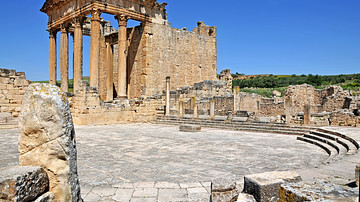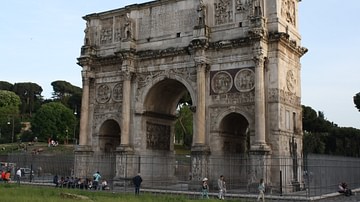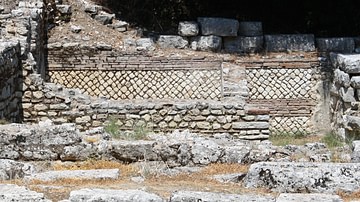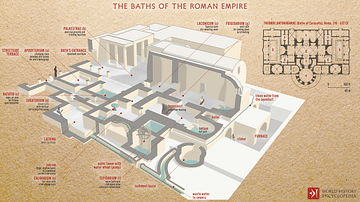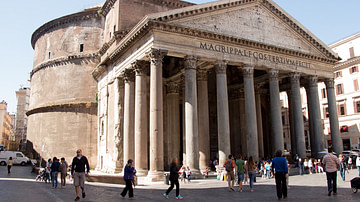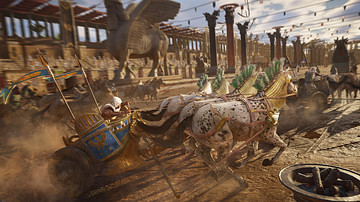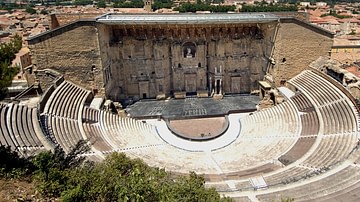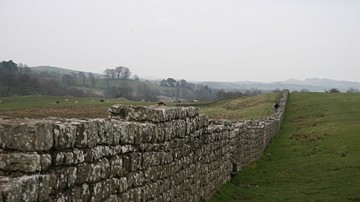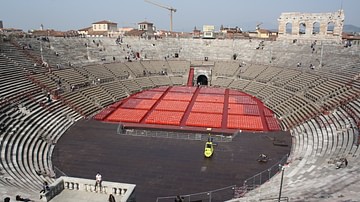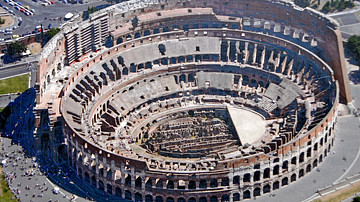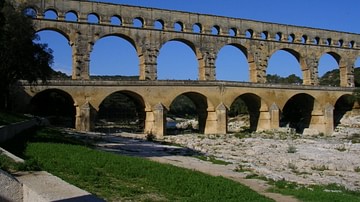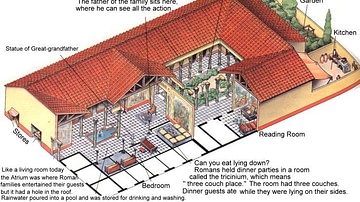Roman architecture was nothing if not eclectic. From ingenious underfloor heating to gravity-defying arches, the Romans added to the Classical repertoire such grandiose structures as the triumphal arch, basilica, amphitheatre, and city tower block. The combination of brick, arch, and concrete allowed greater distances to be spanned than ever before so that interiors became bigger and ceilings higher. The Roman world encompassed countless peoples and cultures, but architecture helped stamp both Roman authority and culture on major cities from Cadiz to Constantinople. Still today, many of the finest ancient monuments seen across Europe, Asia, and North Africa are the works of Roman architects which have stood the test of time, warfare, and earthquake.
In this collection, we examine the particular and unique features of Roman architecture in general, look at some of the quintessential structures such as Roman baths and fortification walls, and study in depth a selection of outstanding Roman buildings such as the Colosseum and Pantheon.
Bedrooms and libraries should face east since their function requires morning light, and again, so that the books in libraries will not rot. (Vitruvius, On Architecture, Bk. 6, Ch. 4.1)
